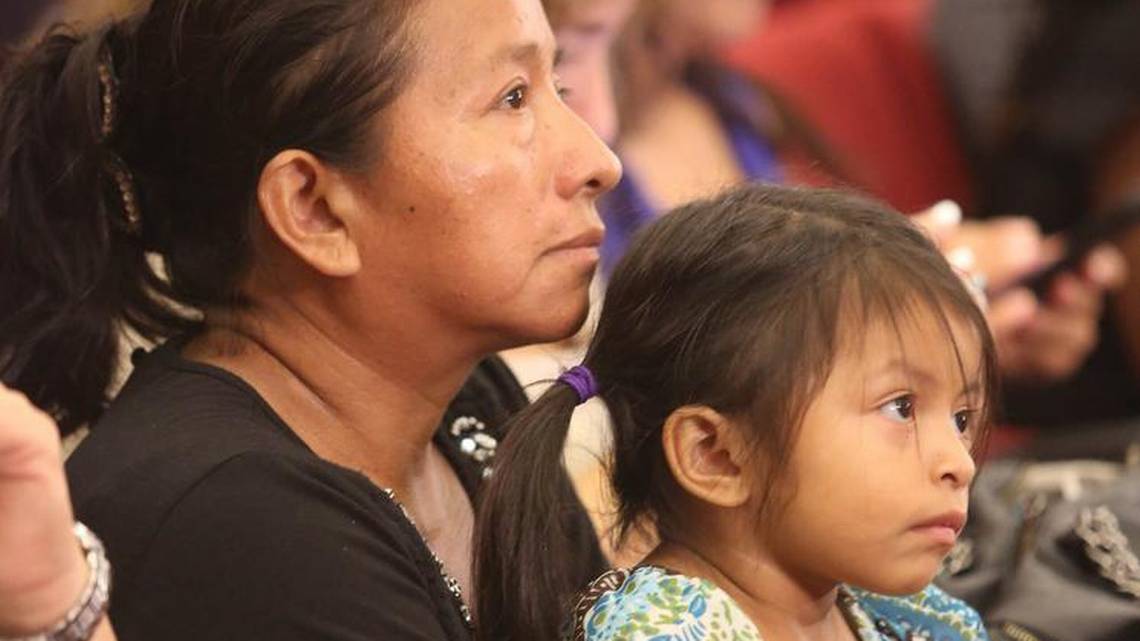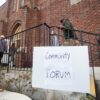August 29, 2019. Miami Herald.
Francis Tume, 26, moved to Miami from Peru with his family when he was 6. When he got a Florida driver’s license seven years ago, that was a big deal.
Tume got his license after enrolling in the Deferred Action for Childhood Arrival (DACA) program in 2012 — and the card has made things easier for him both on and off the road.
He knows that because he has seen his undocumented parents, who lack identification, struggle with routine parts of life, like filling prescriptions at the pharmacy and even picking him up at school when he was younger.
“They’re small details, but they are very frustrating and they kinda just add up,” he said. “Even if all they want to do is go into a gated community, you still have to show some form of ID to get in. So they can’t even get in there.
“That affects their jobs because they need to get in to go to work,” said Tume, whose mother cleans houses for a living. “It limits them.”
The Tumes’ limitations and those of tens of thousands of other Miami-Dade County residents — undocumented or otherwise who lack a legal identification card — could be mitigated by a new project spearheaded by People Acting for Community Together (PACT), an interfaith community organizing group based in Miami. In collaboration with the office of Miami-Dade Commissioner Daniella Levine Cava, PACT is working on a program that would make a local ID card available to all county residents who would like one, giving more people access to local services. This comes five years after a similar, but ultimately stalled initiative by county government.
“[An] ID is so important. It’s something you use every day. Unless you don’t have one, you don’t know how important it really is,” said the Rev. Aaron Lauer, who is the co-chair of PACT’s immigration committee. “Immigration might primarily be a federal issue, but this is a way in which we can make a difference at a local level.”
MIAMI’S HISTORY WITH LOCAL IDS
Tume said he and his parents were “frustrated” that “nothing happened” from the 2015 push for local IDs.
Back then, Miami-Dade was looking into emulating places like New York City and Los Angeles by implementing a municipal ID program (municipal IDs are identification cards issued by a local government, be it a city or county). In September of that year, Miami-Dade commissioners unanimously approved a resolution asking Mayor Carlos Gimenez to present a report about the feasibility of creating a municipal ID card, with a December deadline. But it took nearly four years, instead of just three months, to get the feasibility study finished.
When it was finally published in April, the report underlined a key flaw: because of public records laws in the state of Florida, a municipal ID card program would have trouble keeping applicants’ personal information private.
“Every applicant who becomes a cardholder will be included in a record of registry that could be susceptible to requests from law enforcement agencies,” the report states. “By creating a local municipal ID program, a record of cardholders’ identity is inevitable.”
But even before the report came out — and as the Trump administration continued ramping up immigration enforcement nationwide — confidentiality concerns had been on the minds of those pushing for local IDs.
“There was a lot of worry that, OK, now we are going to have this list of people who are signing up for a municipal ID and if it were to fall into the hands of ICE, they would say, ‘Oh, here is a list of essentially undocumented immigrants,’” said Lauer.
For Levine Cava, the municipal ID program proposed in 2015 is a now a nonstarter.
“[2015] was a different era,” she said. “We did not have Trump in the presidency. This kind of very punitive focus on immigrants was not the norm in the country. As this report was being prepared, it became increasingly apparent that there were real security concerns for the people who would be requesting the municipal IDs. So we had to look in a different direction.”
That different direction, as Lauer and Levine Cava explained, is a community ID program, which they say would offer the same benefits as a municipal ID program without compromising people’s privacy.
HOW COMMUNITY ID PROGRAMS WORK
Instead of being directly administered by a county or a city (like municipal IDs are) community IDs are administered by a third party non-profit, with a county or a city’s approval.
And third party non-profits are not susceptible to public records laws.
“So what would happen if this got approved would be a non-profit would produce the cards and hand them out to people, and Miami-Dade County or the local municipalities would acknowledge that as a valid form of local identification,” said Lauer. “That’s the distinction. That’s why we made a move for a community ID program.”
Added Levine Cava: “Essentially, under Florida law, if the county were to develop these IDs, then that would all be subject to public records requests. And the community groups that have done it [in other localities] have been able to function with greater confidentiality.”
Across the country, it’s mostly been faith groups and religious organizations that have championed the spread of community ID programs. FaithAction, a Greensboro-based nonprofit, helped launch the first such program in North Carolina in 2013.
Now, the “Faith Action ID Network” includes cities in Iowa, Ohio, Virginia, South Carolina and even Florida, where both Gainesville and West Palm Beach are home to community ID programs.
PALM BEACH’S EXPERIMENT WITH COMMUNITY IDS
The Legal Aid Society of Palm Beach County started issuing community IDs in March, after West Palm City commissioners voted to recognize the IDs in February. Since then, about 1,500 ID cards have been distributed, mostly going to immigrants, homeless people and snow birds who lack the documents needed to obtain a Florida state-issued ID.
Legal Aid lawyer Vanessa Coe, who runs the community ID program, has seen the ID cards start making a difference in people’s lives.
“We had a lady the other day who lost everything in a house fire but she’s getting chemotherapy so she needed something to be able to pick up her prescription slip, and this was good enough for that,” she said. “It’s been really cool to see what people are able to do with them.”
When the program started, Coe said, she knew that West Palm Beach police would honor the IDs. But she wasn’t sure who else would support them.
“Now we know that some of the credit unions are accepting it and even the bigger banks are using it as a secondary form of ID. Pharmacies, hospitals, the library system. Some of the schools we’ve been told are accepting it. So it’s very encouraging to know that it’s working,” she said.
The level of interest from the community has also exceeded expectations.
“We underestimated the amount of people who would come forward,” said Coe. “So we were prepared to do 300 [ID cards] during our first event, our first ID drive, and people started lining up at 6 p.m. the night before to reserve a spot in line. There were probably over 3,000 people that first day. And there’s really no way around that in South Florida. It’s just the kind of location we are all in. There’s a lot of people from a lot of different places.”
Four additional ID drives have taken place in Palm Beach County since the March kick-off. They’ve all taken place in churches to diminish the chances of being targeted by ICE.
At those events, protecting cardholders’ personal information has been a top priority.
“We’ve never made copies of a document and whatever information we put in the computer to print out an ID gets deleted afterwards,” said Coe. “We just have a list of last names and that’s it, no addresses, no phone numbers, no birthdays. Because that was our first and primary concern. We had to make sure we were protecting everybody.”
THE FUTURE OF COMMUNITY IDS IN MIAMI
Commissioner Levine Cava said Miami-Dade County won’t be able to follow in Palm Beach’s footsteps until late next year at the earliest. First, a local community ID program would need to secure buy-in from key constituencies, including law enforcement and as many of Miami-Dade’s 34 municipalities as possible.
That’s something that the community ID program in Palm Beach continues to struggle with. There, only three cities currently accept the ID and the county still doesn’t. And though the West Palm Beach Police Department backs the project, viewing it as an important way to strengthen cooperation between law enforcement and vulnerable immigrant communities, the county’s sheriff has expressed misgivings.
The matter of securing funding is also still up in the air. In the April feasibility report from theMiami-Dademayor’s office, the price tag of a municipal ID program was estimated at $2.5 million, though it’s expected that a community ID program would be cheaper.
“When you are not dealing with a government enterprise, it’s a simpler process,” said Levine Cava.
As proposed legislation for community IDs gets drafted, Levine Cava describes this as a project that could bring some relief to immigrant communities.
“We are living in a time when people are fearful and the intent of federal actions is to make people fearful,” she said. “There’s nothing about [community IDs] that interferes with the federal government’s exercise of its authority. So we are not a sanctuary county, we’re not evading immigration laws, nothing of the sort. We are simply creating a convenient vehicle for people who live in this county to access local services so it provides dignity, it provides inclusion but it does not in any way alter the federal laws of this country.”
Tume, the DACA recipient from Peru, remembers his family really getting their hopes up when local IDs were first talked about in Miami-Dade in 2015. Although nothing came out of it then, he’s hoping this new initiative will be different.
“I feel like this time, after the ICE raids, after what happened in El Paso, hopefully people realize that we really do need this because we want to be a part of this community and feel welcomed.”
Added Levine Cava: “I think everybody benefits when people are not in the shadows.”
View original article.






